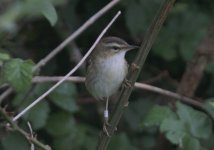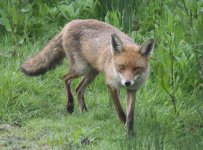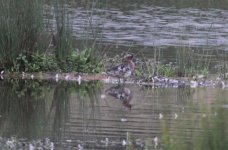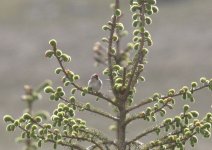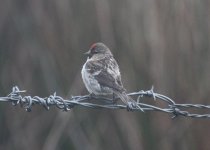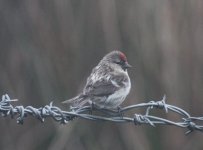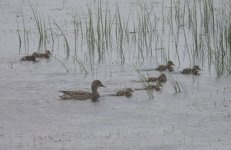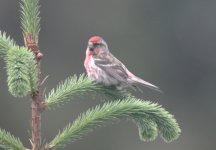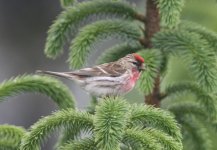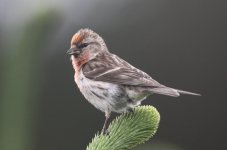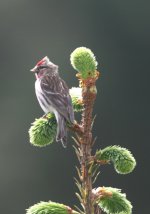Much has been written and discussed on the subject of ‘plumage variation within the Redpoll group’, almost all involving winter flocks or bird table situations. While watching a pair of ‘Lesser cabaret type’ Redpolls on territory at a undisclosed site in woodland quite close to the Camel 20 05 2012 I noticed several individual Redpolls loosely associating with the pair, showing much white to rump and very little dark streaking to their under-parts recalling ‘Common/Mealy flammea types’, all showing pale-ish rear scapulars the palest bird (first photo left only) showing a clean white rump and unstreaked undertail coverts reminiscent of a small ‘Arctic hornemann’s type’. I see nothing wrong with describing the different Redpoll phenotypes as ‘types’ there is genuine variation within Redpoll group and some taxonomists have always preferred to regard them all as one variable species (e.g. Salomonsen 1928) The latest mtDNA research suggests that they were correct with insufficient evidence found for any subdivision of the Redpoll group, nevertheless much interesting variation in size, structure and colour does exist, I am only a bird-watcher not a geneticist only observing the observable, never a avid lister I see nothing less interesting or dismissive in a particular observable phenotype, simply because it may be lacking the convenient man made status of a species. Faced with at least two Common/Mealy types and one Arctic type all three probable females, at the end of May, all appearing to be approximately the same size though shorter necked with fluffier plumage (not obviously larger than Lesser types, the very pale individuals always look slightly larger to me) strongly suggested faded or bleached out Lesser types (at this point I cannot definitely rule this possibility out) when comparing the three paler individuals close to the normal Lesser types, their tertials and flight feathers appeared noticeably more abraded almost lacking any white fringes in sharp contrast to the much fresher breeding Lesser pair. Having had limited experience with summer Redpolls I can easily understand the normal weathering and fading of flight feathers, but had assumed that all types and sexes were at their ‘palest’ in fresh plumage, with the tendency for the paler tips to wear off in spring exposing darker areas, such as, the males acquiring breeding rose-pink on throat, breast and rump. I must stress that the undisclosed site is definitely not a bird table situation; the birds are apparently drawn to the breeding pair very occasionally (most often early morning) to avoid disturbing breeding birds they can only be safely observed from a nearby footpath. At least two individual Common types still at the site this morning. Bird guides have reported Common type Redpolls from Orkney and Donegal already this morning suggesting that it may still be a little early to discount the possibility of late migrants. For anyone interested a full description of each individual with all relevant photos will be written up at a later date.




